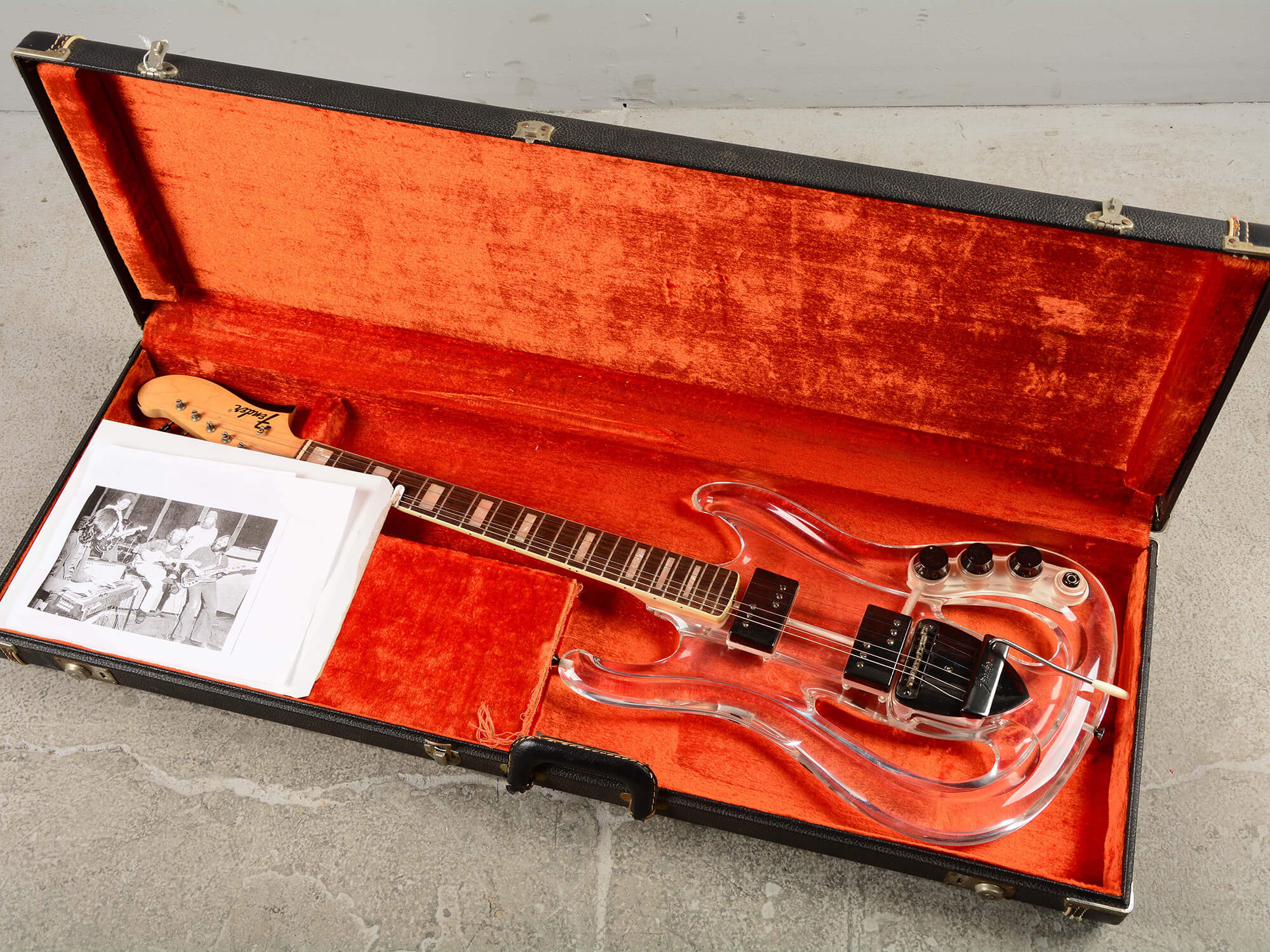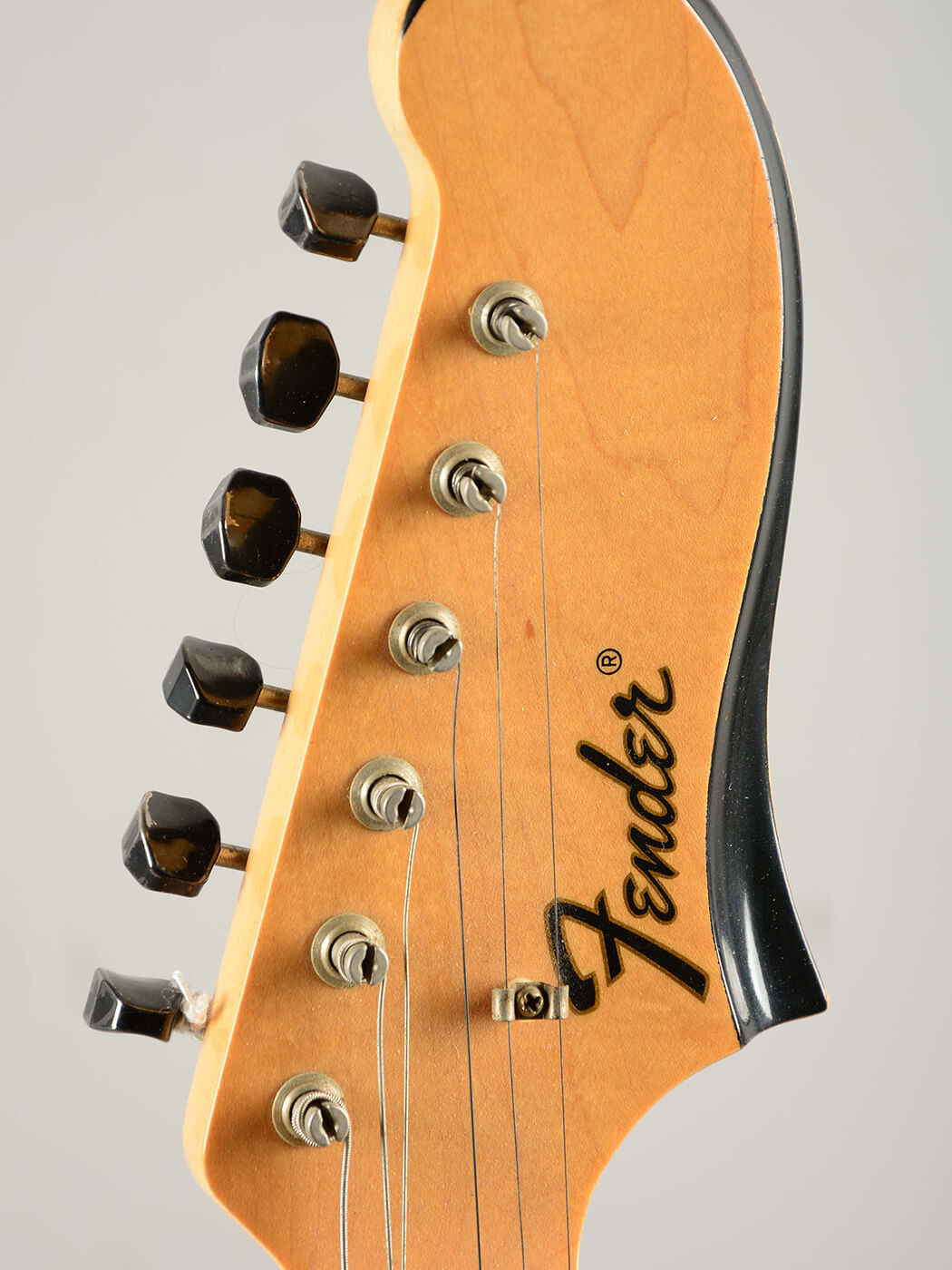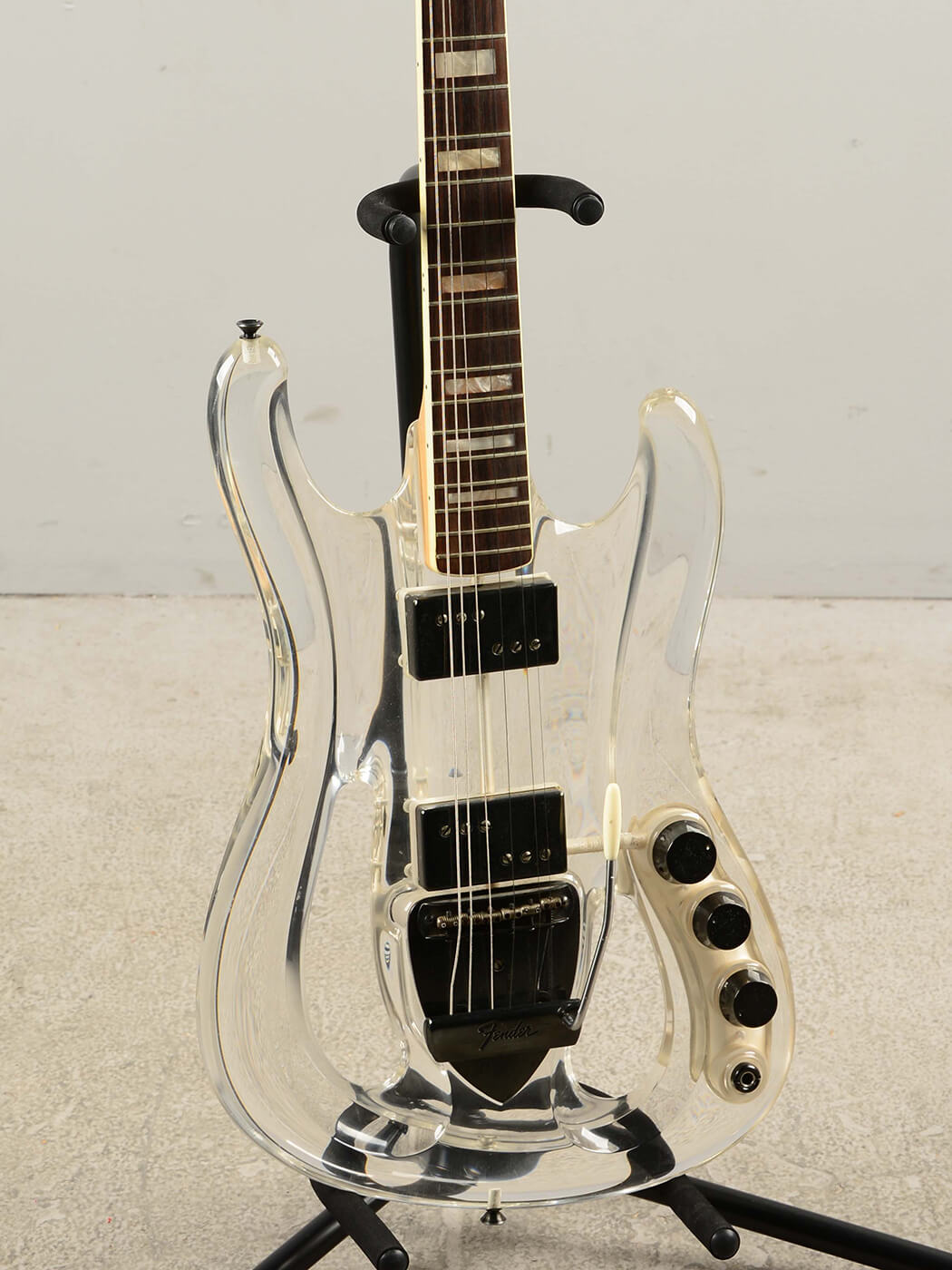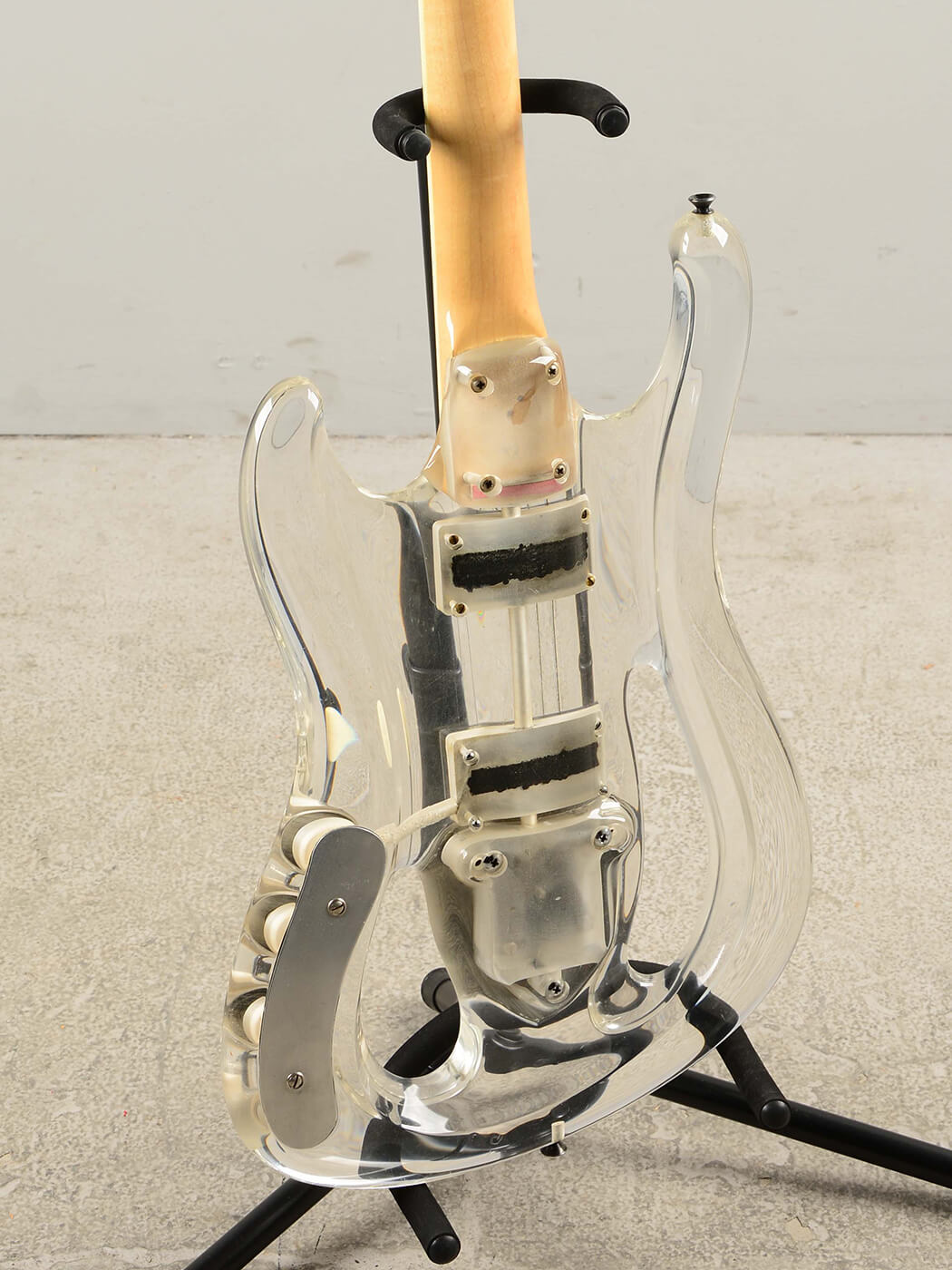Related Tags
The Story of the Carl Wilson Prototype Fender
Carl Wilson’s Fender prototype was meant to compete with Dan Armstrong’s see-thru Lucite guitars manufactured by Ampeg between 1969 and 1971

Photo courtesy of Morphy Auctions, www.morphyauctions.com
When we think of guitar heroes, the name Carl Wilson doesn’t come up very often, which is a shame because he was a fantastic guitar player and multi-instrumentalist. His playing style provided a subtle lift to the iconic sound of The Beach Boys. The guitar was seldom the focal point of a Beach Boys song. Carl Wilson wasn’t necessarily someone who was recognized because of his guitar playing chops, the Beach Boys music was often seen as a background for the vocal harmonies they were known for, especially in their early days.
- READ MORE: A Brief History of Travis Bean Guitars
While Carl Wilson used many guitars through the years, such as Epiphone Rivieras, a Gibson ES-335, a Guild Starfire, and a Rickenbacker 360, he is most closely associated with his use of Fender instruments over the years. The Beach Boys were a cornerstone in ad campaigns for many of Fender’s models released in the 1960s. The Beach Boys began their career in 1961 and were massively popular throughout the 60s.
It wasn’t uncommon for Fender to give The Beach Boys prototypes of their new models, especially since the Beach Boys were Southern California natives, the same place Fender was based out of. It also didn’t hurt that CBS bought Fender in 1965 and The Beach Boys reportedly had a pretty good relationship with the company already. The Electric XII model was released in 1965 and Carl Wilson had one of the first prototypes of that guitar as well. He is also rumored to have had one of the first prototypes of the Jaguar. Some of these prototypes were kept and used by Wilson on Beach Boys records, others were lost to the sands of time before they were ever returned to the company, as is traditionally the practice. This is what makes prototypes so rare – they generally don’t leave the parent company – some are even destroyed per company policy if they do not end up going into production.

One such prototype is said to have been built in 1972 by the great Roger Rossmeisl, who was quite an accomplished luthier, even before being hired on at Fender – he and his father designed and created the first electric guitar to be produced out of Germany in 1947, which was a lap steel guitar. Prior to working with Fender, he designed guitars and basses for Rickenbacker – most notably the 300 Series, which included the iconic Rickenbacker 360. At Fender, he designed the Coronado, Montego, Wildwood, and LTD, but he is best known for designing the Telecaster Thinline.
The prototype guitar was photographed sometime in early-mid ’72 being played by Carl Wilson alongside other members of the Beach Boys while recording their ’73 album “Holland”, it can only be deduced that this prototype guitar was finished sometime in late-’71 to early ’72. One look at the guitar and you can tell how unique and revolutionary it was for its time. Fender did a lot of experimenting in those years. In fact, the Fender promotional photo where Carl Wilson was first seen playing this guitar, features a couple other prototype Fenders within, including a prototype Coronado being played by Blondie Chaplin.
The guitar was meant to compete with Dan Armstrong’s see-thru Lucite guitars which were manufactured by Ampeg between 1969 and 1971, thanks to some high-profile artists using them, they were rapidly becoming a sought-after instrument. Keith Richards and Mick Taylor got Dan Armstrongs in 1969 while working on their “Exile on Main Street” album. Bass players like Geezer Butler and Jack Bruce also used them around that time. In spite of their growing popularity, Dan Armstrong closed up shop in 1971 after some sour business dealings with Ampeg. Fender saw an opportunity to take over that niche market. It brings the story of Dan Armstrong full circle, because Armstrong was inspired to pursue his Lucite construction after seeing an all-Lucite guitar that Fender Stratocaster had made for trade shows. This wasn’t necessarily a functioning guitar, and it was never put into production – it was just a marketing tool at the time, but it inspired Armstrong to pursue a guitar with an acrylic construction.

1971 was the first year to see the full unveiling of Fender’s unique Wide Range Pickups, which were designed by Seth Lover, the same guy who designed the PAF humbucker pickups for Gibson. This prototype was probably one of the first guitars to feature those pickups. Although, in 1971-72 they came installed in the Deluxe, Custom and Thinline Telecasters.
The Wide Range pickups are often generalized as “Fender’s version of a humbucker”, but the truth is that they were a very different design. Instead of using Alnico bar magnets with metal slugs or pole pieces, they used magnetic pole pieces. The magnets were made of a different magnetic alloy called CuNiFe (Cu = Copper, Ni = Nickel, Fe = Iron) from 1971 until 1979. This design remained out of production until 2020 when Fender started producing them again. CuNiFe pole magnets are weaker than AlNiCo bar magnets, so to compensate, they have significantly more winds than a traditional humbucker. The DC resistance of a Wide Range Pickup averages 10.5K. A PAF humbucker had more variation but ranged between 7.5K and 9.5K ohm. As a result of the extra winds, the Wide Range humbuckers required a bigger casing. So they don’t fit in a standard humbucker size rout. In fact, many companies have made Wide Range style pickups in a size that will fit a standard humbucker pocket, but they typically don’t use CuNiFe magnets. But if you want to drop humbuckers into a ’72 Telecaster Deluxe, for example, you’d need to get a different pickguard or use an adapter ring.

The headstock, you may recognize from the Starcaster, which was designed by the great Gene Fields. This prototype was thought to be the first incarnation of the headstock design since the Starcaster didn’t come out until 1976. However, a deeper dig into Fender history shows us that an early prototype of the Fender Marauder from 1963 had the same headstock shape. So we see that designs were often passed around the Fender factory back then. Another interesting spec is the use of black anodized hardware, which hadn’t been seen on a Fender guitar prior to this [to my knowledge]. The body has stylized cutouts to reduce the infamous weight issues of the original Lucite guitars.
The prototype was put up for auction by Morphy Auctions in 2018 and it recently popped up on Reverb for $30,000. Including the original case and the original mini-trem arm. It did have a small 2/5″ pressure crack near the neck joint.
